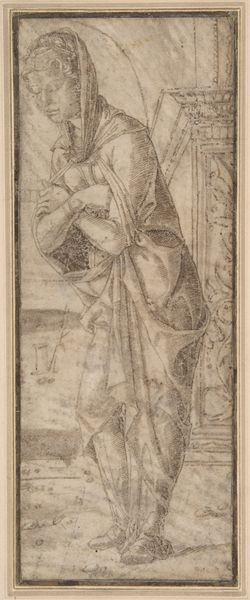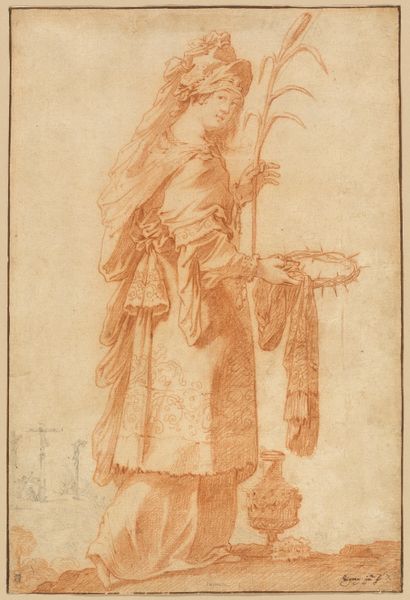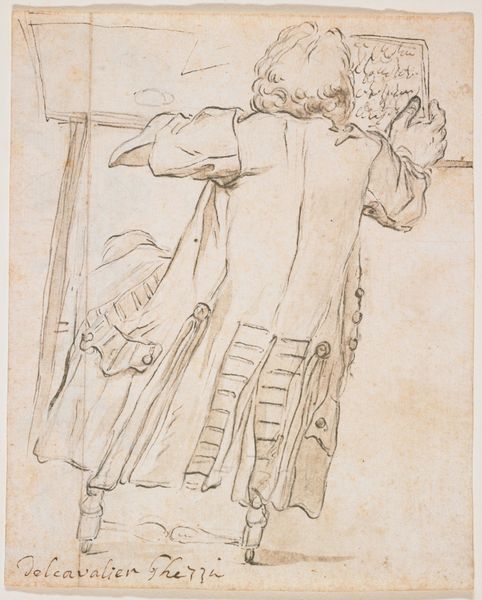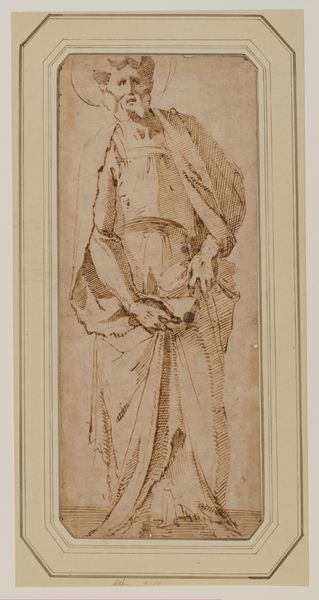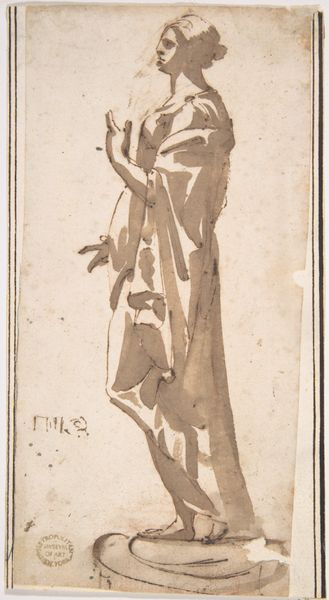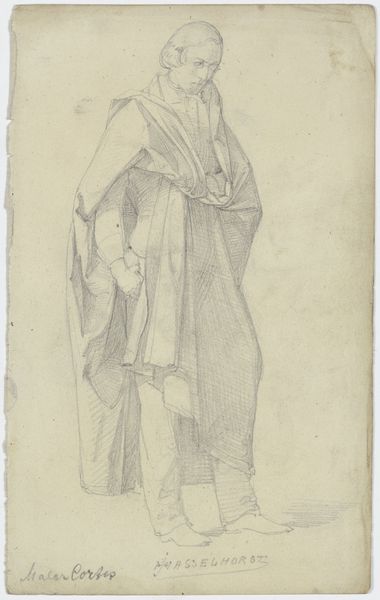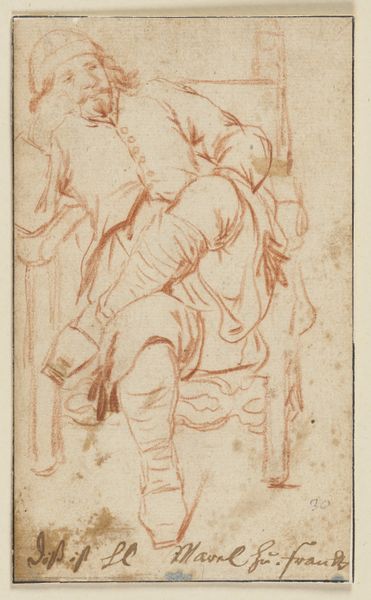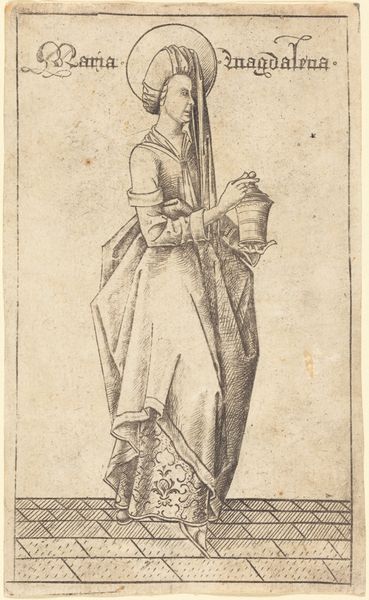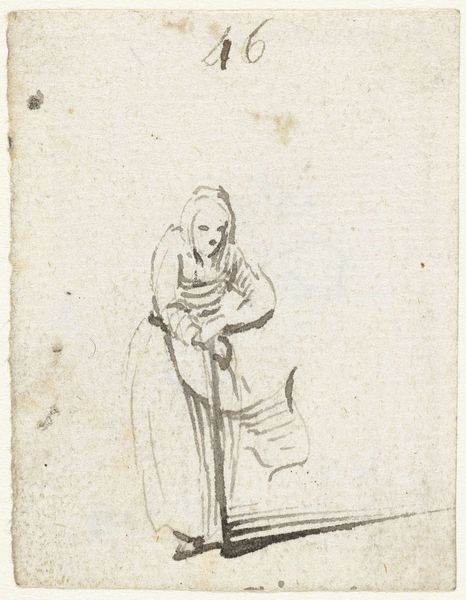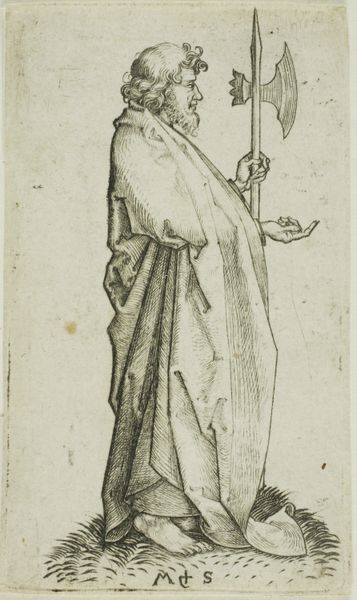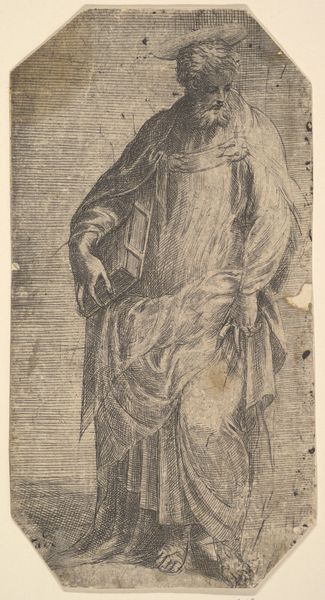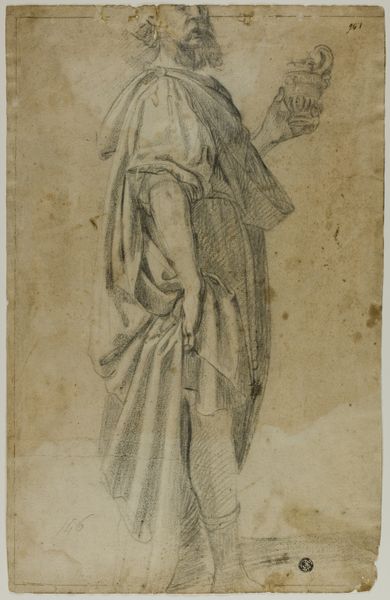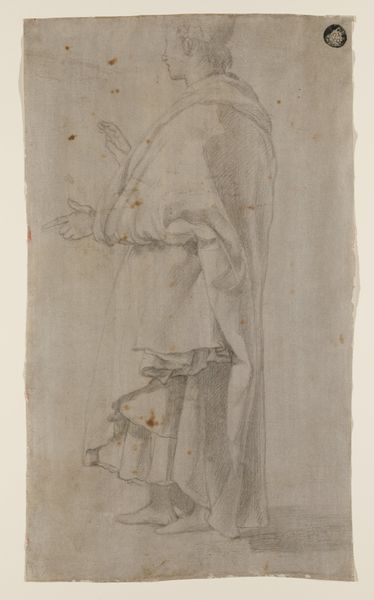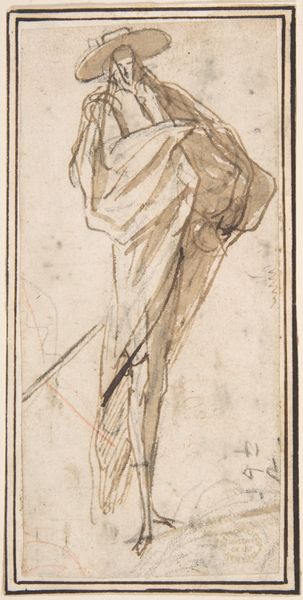
drawing, ink, pen
#
drawing
#
narrative-art
#
charcoal drawing
#
figuration
#
ink
#
pen
#
history-painting
#
academic-art
Dimensions: 5 7/8 x 2 3/4 in. (14.92 x 6.99 cm) (sheet)12 x 9 5/16 in. (30.48 x 23.65 cm) (outer frame)
Copyright: Public Domain
Curator: Let's delve into this intriguing image, a depiction of Moses rendered in pen, ink, and charcoal. It's attributed to an anonymous artist working around the 18th century, and currently resides here at the Minneapolis Institute of Art. Editor: The composition immediately strikes me. The figure is contained within what appears to be an ornamental border. There's a fascinating use of line and wash to create depth despite the minimalist palette. The subtle shading and strong contours provide shape while hinting at form. Curator: Indeed, this "Moses" drawing provides insight into the complex power dynamics embedded within religious iconography during the period. Notice how Moses is rendered—the long beard signifying wisdom, the book denoting the law he carries, it speaks to an authority inextricably tied to the patriarchy of its time. Editor: Yes, the book does ground him; and the rendering feels monumental, as if hewn from stone, but notice the fragility. The light wash and the somewhat unsteady line quality add an unexpected, almost tentative, aspect to such a figure of authority. Curator: Considering the context of its creation, we also have to acknowledge the impact of colonialism on artistic representations. The heroic, almost god-like portrayal of a religious figure could be interpreted as reinforcing established hierarchies and justifying social stratifications prevalent at that time. Editor: Perhaps. But the looseness of the line undermines, visually, this solidity, this supposed immovability. And what about that staff between his legs? He sits over the symbolic form with nonchalance. I like that kind of semiotic ambiguity. Curator: It’s hard to disregard the potential impact such depictions had, reinforcing societal structures and implicitly dictating the roles of the subjugated versus those in power. Even something as simple as line work contributes to narratives of oppression, if one chooses to understand that, consciously. Editor: It's true that representation of authority is at play, but I'd still argue for the quiet formal qualities to be reckoned with. The dynamism of the wash, set within that delicate border, makes this more than just a purely political, or historical, object for me. Curator: It's a complex intersection, and one that reveals more layers upon scrutiny. Thank you for helping me dive in more deeply. Editor: Always a pleasure to examine how we can decode such historical images, particularly to see the dialogue possible through even one quick charcoal and ink wash.
Comments
No comments
Be the first to comment and join the conversation on the ultimate creative platform.
